 The following article was taken from the BBC News Magazine:
The following article was taken from the BBC News Magazine:
Who on Earth are the Zonians?
By Kate Dailey, BBC News, Washington.
11 August 2014.
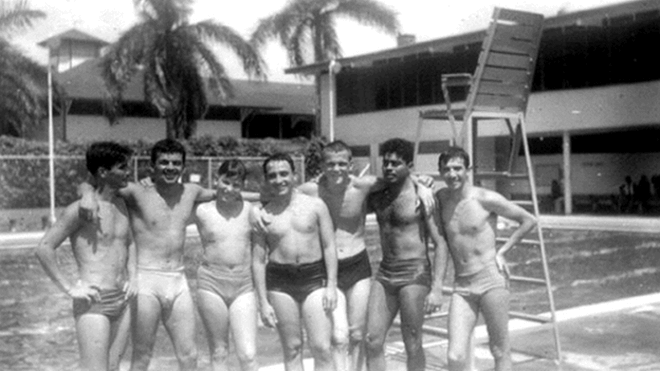
The Zone had lots of leisure amenities, including this pool at the Rodman Naval Base
For almost 100 years, thousands of Americans lived a life of luxury in secluded tropical communities close to the Bay of Panama. Known as "Zonians", they maintained one of the world's great engineering feats - the Panama Canal.
Established in 1903, the Panama Canal Zone constituted a home away from home for the Americans who built and maintained the Panama Canal and the workers who supported them.
The zone was an area of 533 square miles that ran the course of the canal and was controlled by the US. Families were given generous benefits, including subsidised housing, ample holiday time, well-stocked commissaries and attentive staff.
Its residents enjoyed the beautiful weather and more relaxed lifestyle of Panama, while also living in comfortable American-style housing, experiencing a top-notch American education and enjoying all the perks of US citizenship.
"It was a strange kind of artificial place," says Michael Donoghue, author of Borderland on the Isthmus: Race, Culture, and the Struggle for the Canal Zone. His father travelled through the zone during World War Two, and compared it to "a small southern town transplanted into the middle of Central America".
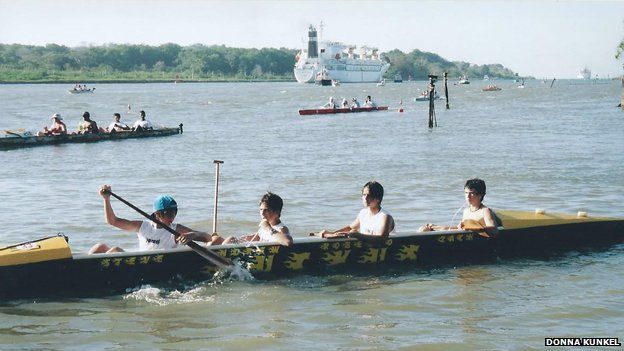
The cayuca race signified the end of Panama's dry season
"They had a joke - how many Zonians does it take to change your light bulb?" says Jill Bany, who grew up in the Zone. "Two. One to call housing and the others to mix your drink."
During the Korean War, as many as 100,000 Americans lived in the Zone, about one-tenth of the country's population. In more peaceful times the numbers were half that.
English was predominantly spoken and even life-long Zonians could get away with not learning Spanish.
"They were pretty much set apart from the general Panamanian population by their own decision," says Alonzo Delaguardia, vice rector for university relations at Florida State University's Panama campus. The school was established in 1957 at the request of the US Department of Defense to provide education for Zonians.
"They had everything here. There was no need to go to Panama City," he said. "It was a bit of a contained area."
Indeed, Zonians had their own social clubs and sports teams. They had cinemas that played American releases and shops that carried US staples.
Students at Balboa and Cordova high schools joined scuba club as well as chorus and studied marine biology along with maths.
"There were parrots and monkeys in your back yard - you go outside and step into to the jungle," says Bany, who adds that there was no fear for your children playing in the street. "It was secure."
It wasn't all idyllic - for a long time, the zone was segregated between American and Caribbean workers, with everything from shops to latrines designated as "gold" (for Americans) and "silver" (for West Indian and Caribbean workers).
During construction on the earlier Panama Railroad in the middle of the 19th Century, Americans were paid higher wages in gold and West Indians received lower salaries in silver.
School desegregation and the enforcement of the Civil Rights Act did not come until the 1970s, almost 20 years after being implemented in the US.
"I was born in the same hospital as John McCain, but he walked out an American and I walked out a Panamanian," says Yvette Modestin.
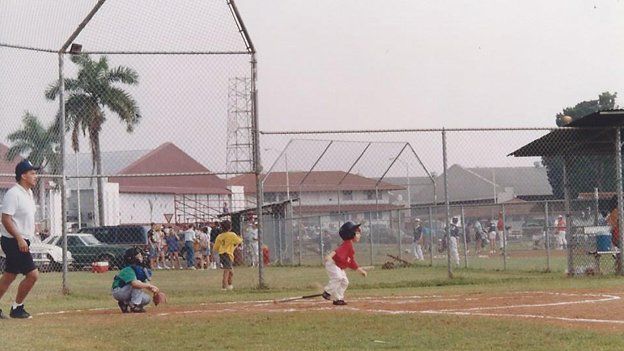
Zach Kunkel played little league like his peers in the United States
McCain, the prominent Senator and former Presidential Candidate, spent his first five years in Panama as a son of a navy admiral. Modestin grew up within the Zone, but was raised in a culture that drew from her Panamanian and Caribbean roots.
She didn't come into contact with white Zonians until the schools were desegregated.
Her upbringing didn't suffer because of it, she says.
"I saw black nurses, black doctors, black firemen, black teachers, so I knew I could be all of these things," she says. "We knew we didn't have what the white community had, but we didn't want it."
Though Modestin was aware of the more brutal racism suffered by her parents and grandparents, she still took pride in the work her family and community did to build the canal.
Both Modestin and Bany remember participating in the annual cayuco race, where Zonians paddled the length of the canal for three days.
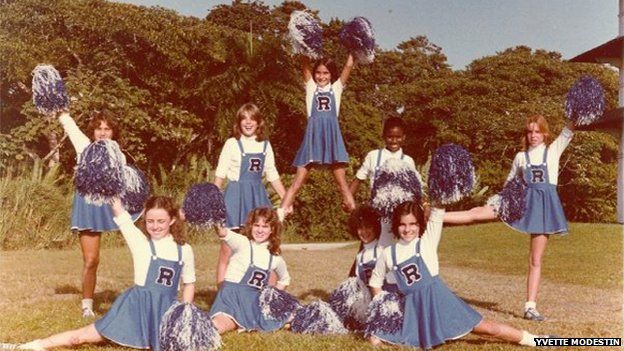
Yvette Modestin was the first black cheerleader after Cristobal High School integrated
But outside the Zone, tensions were high.
"Most Zonians were unaware of how much resentment they began to provoke in the Panamanians," says Donoghue. While Americans lived in privilege, individual Panamanians "couldn't cross their own country at times without having to answer to a foreign police", he says. These officers spoke a different language and enforced a different law code, and even sent some law violators to a US-run prison in the zone.
When the US signed on to finish the canal in 1903, the government of Panama granted them the rights "as if sovereign" to the Canal Zone "in perpetuity".
Violent protests in 1964 against the Zone resulted in the death of 21 Panamanians and four US soldiers. In 1977, Jimmy Carter signed a treaty signalling the beginning of the end for US involvement in Panama, and committed the US to leaving by the year 2000. Sixty per cent of the Zone itself was returned immediately to Panama in 1979 (meaning US children born after that date weren't officially Zonians).
In 1999 the final transfer of the canal to Panama was concluded, Almost overnight, most of the Americans returned to the US.
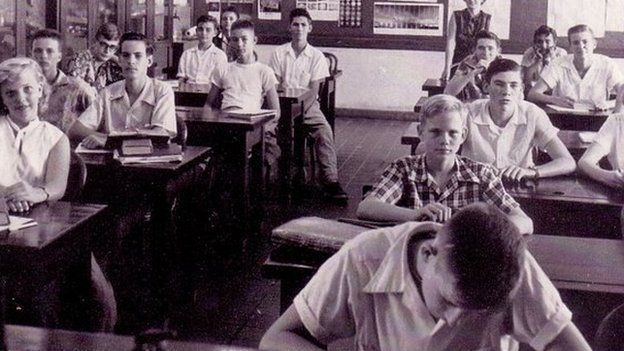
"I went from having a normal childhood with neighbourhood friends in a nice suburban neighbourhood with mowed lawns, and all of the sudden everyone is gone," says Zach Kunkel, who was born in 1976. "From one day to the next, it was clear that everything had changed and there was no going back."
Marquez, whose family also stayed in Panama, says that of the 180 students in her high school class, 160 left.
As a resident of the Zone, her family was given first chance to buy one of the identical white duplexes that lined the residential areas. They sold the house and moved to the city.
Now, the homes have been painted bright colours and customised - some with additions, some with porches, all a far cry from the uniformity that reigned during the days of the Canal Zone.
And Panama has also left its mark on the Zonians who have returned to the US. Every year hundreds travel to Tampa for a reunion.
"If I had been older, I would have never left Panama," says Bany, who moved with her family to Tulsa. "It was a perfect place."